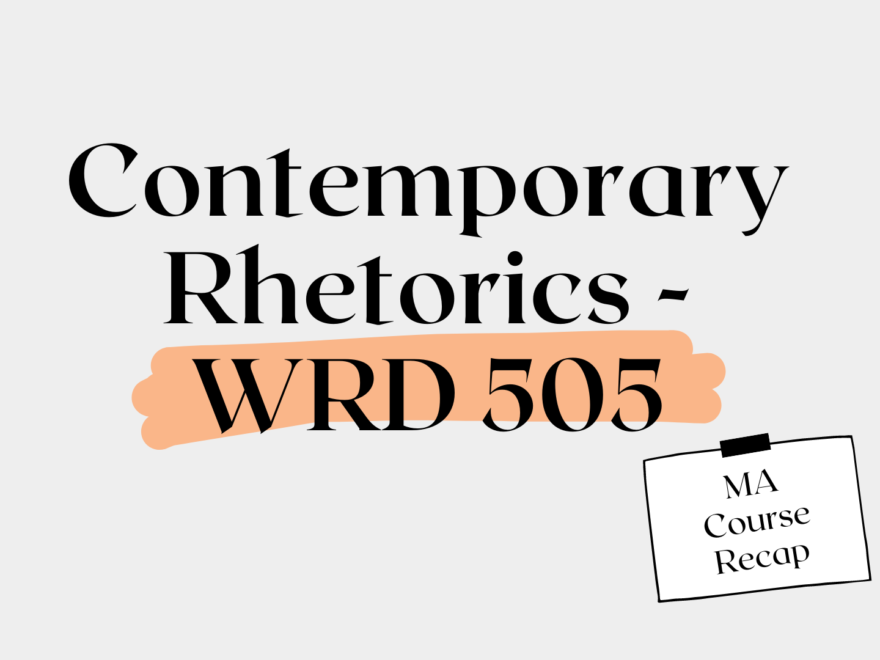Last quarter, I was one of four students in Contemporary Rhetorics. While that may seem scary, the class size was perfect because, with any more students, the discussions could have easily lasted until 10pm. The course, taught by Dr. Jason Kalin, aimed to “engage rhetoric as a vibrant and adaptable capacity to think about social issues, human agency, and community.”
Like any WRD class, there were two to four articles we would read in preparation for class, and then go in depth on however many articles time allowed for. Open discussion was welcomed and encouraged, with ideas about the articles being bounced around and formed as a group (if it so happened we agreed on a subject, if not the discussion took longer).
We covered big topics in rhetoric, like who was right: Bitzer or Vatz? Are animals rhetorical? Is everything rhetorical? How and according to who?
While there was some overlap of ideas and authors from previous classes, WRD 505 expanded my knowledge on rhetoric specifically. Each WRD class usually starts with a loose definition of what rhetoric is, so having an entire course break down rhetoric and all its elements was invaluable to my writing. Particularly, an idea called “invention in the middle ” proposed by Debra Hawhee opened my eyes to the potential of forming new ideas from others as you go along, and emphasized that an interruption in thought is just as much an opportunity to go further as it is an annoyance. In her work “Kairotic Encounters” Hawhee tells us that “one invents and is invented, one writes and is written, constitutes and is constituted” (18).
My favorite aspect of the class was the multiple, shorter writing assignments. Instead of one or two main papers, there was a 1500 word paper every two weeks (with some more multimodal options as the quarter went on.) Not only was this helpful in keeping the topics more succinct and timed with our readings, I felt the benefit of constant writing practice.
It may seem a bit redundant of a writing student wanting to write to get better at it, but having weekly writing tasks improved my skills beyond a classic course style. I found myself wanting to try new things and push my own boundaries based on what I was learning in readings as well as actually wanting to write my papers. Assignments are always a chore, but being excited about the topics and further energized by the discussions made it easy to put energy into the classwork.
While the course load seemed heavy at times, it was actually broken down into very manageable sections that really drove you to want to know more. Dr. Kalin was always willing to provide more resources, outside readings, videos, songs, and more to supplement class and individual papers which led to a very collaborative working environment amongst the students. I never felt like a question was too dumb or too out there, we were reading some very thought provoking things afterall, and all questions were encouraged and discussed at length.
I could say more good things about the class, but my word limit prevents me. Just know that if you want to delve into some modern theory and have (sometimes confusing but always fun) discussions, WRD 505 is for you.
